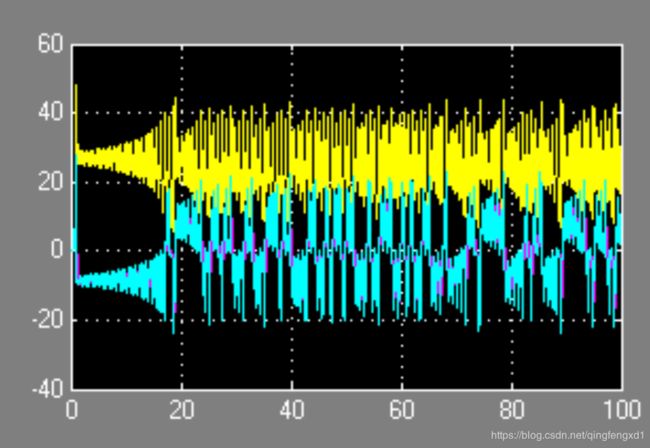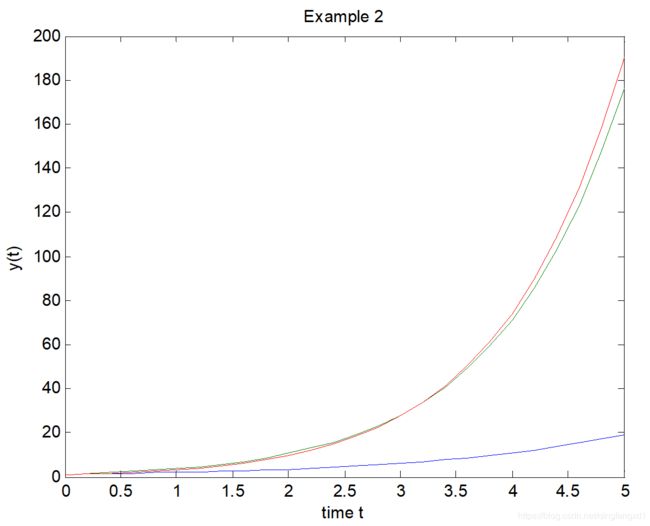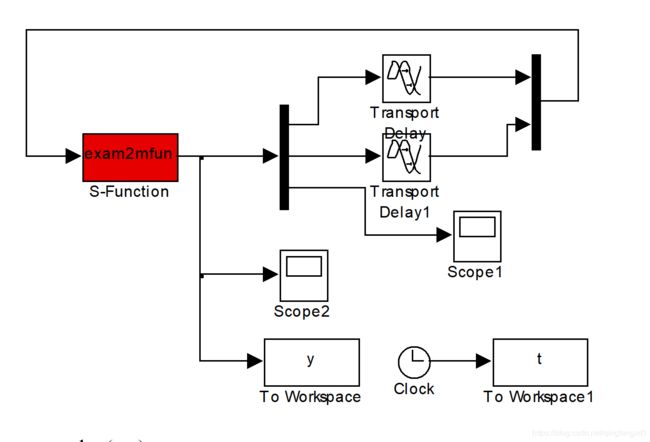- MATLAB随机模拟技术在气候模型中的应用
本文还有配套的精品资源,点击获取简介:MATLAB是科学研究和工程领域中广泛使用的一款数学计算与编程软件,尤其在气象学和气候模拟方面有着重要的应用。’Fletcher_2019_Learning_Climate’项目通过MATLAB实现的随机模拟方法帮助理解气候变化。本文将详细探讨该项目的关键内容,包括气候模型的构成、随机过程与统计方法的运用、MATLAB编程技能、气候数据处理与分析、结果可视化以
- 数据可视化5:MATLAB绘制单组箱线图
箱线图的作用箱形图(又称为「盒须图」或「箱线图」)能方便显示数字数据组的四分位数。箱形图通常用于描述性统计,是以图形方式快速查看一个或多个数据集的好方法。虽然与直方图或密度图相比似乎有点原始,但它们占用较少空间,当要比较很多组或数据集之间的分布时便相当有用。箱线图基本描述该图展示的是一个箱线图(BoxPlot)的主要组成部分及其含义。箱线图是一种用于展示数据分布情况的统计图表,能够直观地反映数据的
- python 科研作图_Origin科研绘图
weixin_39525933
python科研作图
前言入了生物学的坑,狗狗们需要时不时的画一些图,看着别人高大上的图片,大家有没有好奇这些图片是怎么做出来的呢?就本狗狗来看(狗狗可能来自农村-_-,),现在铺天盖地的paper里的图,有些,当然本身就是照片啦,比如跑胶啊WB啊,有些是用R、python、或者matlab做的,那么对于不懂编程的狗狗来说,就需要利用一些趁手作图软件,也可以做出毫不逊色于前者的美图,常见的这类软件有origin,gra
- MATLAB 实现 SRCNN 图像超分辨率重建
leo__520
matlab超分辨率重建开发语言
SRCNN代码实现。该代码使用三层卷积神经网络,进行图像的超分辨率重建,效果比双三次插值好很多SRCNN/Readme.txt,1494SRCNN/SRCNN.m,1267SRCNN/Set14/baboon.bmp,720054SRCNN/Set14/barbara.bmp,1244214SRCNN/Set14/bridge.bmp,263222SRCNN/Set14/coastguard.bm
- Matlab实现特征选择算法中Relief-F算法
guygg88
大数据
特征选择算法中Relief-F算法使用Matlab的实现GetRandSamples.m,1719ReliefF.m,1034Untitled.m,1238data.txt,23637dataregress.m,210
- 基于matlab的二连杆机械臂PD控制的仿真
bubiyoushang888
matlab开发语言
基于matlab的二连杆机械臂PD控制的仿真。。。chap3_5input.m,1206d2plant1.m,1364hs_err_pid2808.log,15398hs_err_pid4008.log,15494lx_plot.m,885PD_Control.mdl,35066tiaojie.m,737chap2_1ctrl.asv,988chap2_1ctrl.m,905
- 2025——》import matplotlib.pyplot as plt/如何在Jupyter Notebook中使用Matplotlib库?
明—猿
NumPyjupytermatplotlibnumpyjupyter
importmatplotlib.pyplotasplt是Python中用于导入Matplotlib库的绘图模块pyplot并设置别名为plt的标准语句。Matplotlib是一个强大的可视化库,广泛用于数据可视化、图表绘制和科学绘图。以下是关于该语句的详细说明:一、语句解析importmatplotlib.pyplotmatplotlib是基础库,pyplot是其子模块,提供类似MATLAB的绘
- 用matlab实现随机森林算法
showmethetime
算法matlab随机森林
用matlab实现随机森林算法,里面附有说明文档,参数可调节RandomForest_matlab/RandomForests/RF.mexw32,81920RandomForest_matlab/RandomForests/RF_demo.m,2536RandomForest_matlab/RandomForests/runRF.m,2616RandomForest_matlab/RandomF
- 231转序和321转序的姿态角与四元数的变换关系(文末附VC++代码和Matlab验证代码)
小亨GNC颐园
matlabVC++运载火箭321转序231转序导弹导航初始化
近程战术导弹的转序一般采用231的顺序,先偏航、后俯仰、再滚转。远程导弹、运载火箭、某些垂直发射拦截导弹的初制导段会采用321的转序,先俯仰、后偏航、再滚转。这两种转下的姿态角与四元数的转换关系如下:321转序//--------惯性坐标系到箭体系的四元数--------------------//doublesic_T=sin(Theta_T_rad/2.0);余下的VC++代码和Matlab代
- matlab教程pdf,Matlab2010经典超强教程(清晰、版).pdf
malartinla
matlab教程pdf
第1章基础准备及入门本章有三个目的:一是讲述MATLAB正常运行所必须具备的基础条件;二是简明地介绍MATLAB及其操作桌面Desktop的基本使用方法;三是全面介绍MATLAB的帮助系统。本章的前两节讲述:MATLAB的正确安装方法和MATLAB环境的启动。因为指令窗是MATLAB最重要的操作界面,所以本章用第1.3、1.4两节以最简单通俗的叙述、算例讲述指令窗的基本操作方法和规则。这部分内容几
- matlab教程r2018a教材,MATLAB R2018a从入门到精通(升级版)
知外君
章MATLAB入门11.1MATLAB概述21.2MATLAB工作环境41.3MATLAB帮助61.4MATLAB操作实例91.5本章小结11第2章MATLAB界面122.1MATLAB搜索路径132.2MATLAB工作区142.3格式显示162.4本章小结17第3章MATLAB基本功能183.1命令行窗口193.2数据类型233.3初等函数运算31章MATLAB入门11.1MATLAB概述21.
- 【优秀文章】7月优秀文章推荐
优秀文章智能自主运动体与人工智能技术——环境感知、SLAM定位、路径规划、运动控制、多智能体协同作者:fpga和matlabC++之红黑树认识与实现作者:zzh_zao【手把手带你刷好题】–C语言基础编程题(十)作者:草莓熊Lotso飞算JavaAI:从“码农”到“代码指挥官”的终极进化论作者:可涵不会debug前端网页开发学习(HTML+CSS+JS)有这一篇就够!作者:一颗小谷粒
- 学Simulink——整流器场景:基于Simulink的单相全桥可控硅整流器仿真建模
xiaoheshang_123
MATLAB开发项目实例1000例专栏手把手教你学MATLAB专栏simulinkmatlab
目录手把手教你学Simulink——整流器场景:基于Simulink的单相全桥可控硅整流器仿真建模一、背景介绍二、系统结构设计三、建模过程第一步:创建新Simulink项目第二步:添加主要模块1.交流电源2.单相全桥可控硅整流器3.LC滤波器4.负载模拟5.触发脉冲生成模块6.测量模块第三步:搭建主电路拓扑第四步:搭建触发脉冲生成逻辑1.设计触发脉冲逻辑2.集成至Simulink模型四、参数设置五
- 【NWFSP问题】基于中华穿山甲算法CPO求解零等待流水车间调度问题NWFSP研究(Matlab代码实现)
欢迎来到本博客❤️❤️博主优势:博客内容尽量做到思维缜密,逻辑清晰,为了方便读者。⛳️座右铭:行百里者,半于九十。本文目录如下:目录⛳️赠与读者1概述1.引言2.理论基础2.1中华穿山甲算法(CPO)核心原理2.2NWFSP数学模型3.CPO-NWFSP求解框架设计3.1编码与解码3.2离散化位置更新3.3目标函数适配4.实验设计与性能分析4.1实验设置4.2结果分析4.3敏感性分析5.结论与展望
- Simscape入门教程
微小冷
机器人Matlabsimulinksimscape弹簧阻尼multibody
文章目录物理网络连接到Simulink运行本文是官方教程构造物理模型的基本步骤的学习笔记,旨在建立一个带有控制器的质量-弹簧-阻尼系统。物理网络在命令行中输入sscnew,即可弹出Simscape模板,基于此模板即可组建其相应的物理网络。通过添加新模块、删除无关模块,连接其物理网络如下所有模块均在Simscape->FoundationLibrary->Mechanical中,具体包括需要的模块包
- 【Python】simulink与python联合仿真
1.1Simulink的边界:事件驱动、算法复杂性与AI集成瓶颈Simulink的核心优势在于其强大的微分方程求解器和对连续时间系统、离散时间系统的精确描述能力。其基于“信号流”和“框图”的建模范式,使得工程师可以直观地构建与物理现实高度对应的数学模型。然而,这种优势也带来了其天然的局限性:基于时间的驱动核心(Time-BasedCoreEngine):Simulink的“心脏”是一个时间驱动的仿
- 计算三维空间中AOA定位的 CRLB(Cramér–Rao 下界,克拉美罗下界)公式与MATLAB例程
MATLAB卡尔曼
MATLAB定位程序与详解matlab机器学习定位导航
文章目录适用条件✅符号定义✅CRLB计算基本框架1.方向向量定义2.雅可比矩阵(Jacobian)3.Fisher信息矩阵(FIM)4.Cramér–RaoLowerBound✅例程中文注释版`aoa_crlb_3d_demo.m`✅运行输出结果在三维空间中,利用AOA(AngleofArrival,到达角度)测量信息进行目标定位时,CRLB(Cramér–RaoLowerBound)表示该测量系
- SIMULINK开发项目实例 1000 例专栏之第663例:基于simulink的SVPWM技术的研究的三相电压源逆变器建模仿真
xiaoheshang_123
MATLAB开发项目实例1000例专栏手把手教你学MATLAB专栏matlabsimulink
目录准备工作步骤详解第一步:创建Simulink项目第二步:选择并添加合适的库组件第三步:构建基本的三相电压源逆变器模型第四步:实现SVPWM算法第五步:仿真与调试第六步:结果分析第七步:优化与改进第八步:导出与部署总结三相电压源逆变器(VoltageSourceInverter,VSI)在电力电子中是将直流电转换为交流电的一种重要设备,广泛应用于电机驱动、不间断电源(UPS)、可再生能源系统等领
- 基于条件风险价值CVaR的微网动态定价与调度策略(Matlab代码实现)
Ps.729
matlab开发语言
个人主页欢迎来到本博客❤️❤️博主优势:博客内容尽量做到思维缜密,逻辑清晰,为了方便读者。⛳️座右铭:行百里者,半于九十。本文目录如下:目录1概述一、CVaR的理论基础及其在微网中的适用性1.CVaR的定义与优势2.微网应用场景适配性二、动态定价与调度模型的联合优化框架1.目标函数设计2.动态定价机制3.不确定性处理方法三、关键算法与求解策略1.随机规划与CVaR集成2.智能优化算法对比四、实证
- 线性代数在图像处理中的应用 --- 纳尼? 2D的高斯核可以通过1D的高斯核直接生成?(秩为1的矩阵)
松下J27
LinearAlgebra线性代数图像处理人工智能
二维高斯核,Rank秩等于一的矩阵之前,我在学习图像处理的时候,会经常用到Gaussianblur,也就是二维高斯低通滤波。当时用的都是Matlab中,现成的图像处理库。只需要输入sigma和kernelsize这些参数就行了,完全不需要考虑高斯核中的每个点长啥样。虽然教科书里面也会有一些配图,例如:直到后来,我学习高斯图像金字塔的时候发现,在别人的代码里面,他在生成二维高斯核的时候,并不是直接写
- 【极光优化算法+分解对比】VMD-PLO-Transformer-LSTM多变量时间序列光伏功率预测Matlab代码
matlab科研助手
算法transformerlstm
✅作者简介:热爱数据处理、建模、算法设计的Matlab仿真开发者。更多Matlab代码及仿真咨询内容点击:Matlab科研工作室个人信条:格物致知。内容介绍光伏发电作为一种清洁能源,其功率预测对于电网稳定运行和电力系统调度至关重要。然而,光伏功率具有高度的非线性和波动性,传统的预测方法难以准确捕捉其动态特性。近年来,深度学习技术在时间序列预测领域取得了显著进展,为提高光伏功率预测精度提供了新的途径
- 用Python解锁图像处理之力:从基础到智能应用的深度探索
熊猫钓鱼>_>
python图像处理开发语言
在像素构成的数字世界里,Python已成为解码图像奥秘的核心引擎。一、为何选择Python处理图像?超越工具的本质思考当人们谈论图像处理时,往往会陷入工具对比的漩涡(PythonvsMATLABvsC++)。但Python的真正价值在于其构建的完整生态闭环:科学计算基石:NumPy的ndarray结构完美对应图像的多维矩阵本质算法实现自由:从传统算子到深度学习模型的无缝衔接可视化即战力:Matpl
- 【心电信号ECG去噪】小波变换(heursure规则阈值+Minimax规则阈值)心电信号去噪【含Matlab源码 3402期】
Matlab领域
matlab
Matlab领域博客之家
- 【信号去噪】基于NLM时间序列心电信号去噪附matlab代码
天天Matlab科研工作室
信号处理Matlab各类代码matlab开发语言fpga开发
1简介作为一种信号预处理手段,信号去噪在众多信号处理应用中发挥着重要的作用.到目前为止,信号去噪问题被大量研究,并取得了许多重要成果,涌现出了包括非局部均值(NLM)去噪算法在内的一批优秀的去噪方法.值得一提的是,相比于传统的局部去噪算法,非局部均值去噪算法有着更好的去噪性能和更好的信号细节保留能力.2部分代码function[denoisedSig,debug]=NLM_1dDarbon(sig
- 基于 Matlab 的小波变换方法对心电信号进行去噪
CodeWG
matlab数学建模开发语言
基于Matlab的小波变换方法对心电信号进行去噪心电信号是医学上常用的一种生物信号,可以反映人体心脏的电活动。然而,由于受到许多因素的干扰,如肌肉运动、电源杂波等,获取到的心电信号往往包含大量的噪声。因此,对心电信号进行准确的分析和诊断前,通常需要先对信号进行去噪处理。小波变换是一种常见的信号处理方法,在心电信号去噪方面也得到了广泛应用。它通过将信号分解成不同频率的子带,根据子带中的能量大小来进行
- 遗传算法Matlab代码实现及算法函数封装
文章目录前言一、遗传算法介绍二、遗传算法算子1.种群初始化1.1二进制数编码1.2浮点数编码1.3小结2.选择算子3.交叉算子4.变异算子5.小结三、算法实例1.例一2.例二3.例三4.小结四、算法函数封装1.示例一2.示例二3.示例三五、参考文献前言遗传算法(GA)作为求解单目标优化问题的有效算法,自提出以来,便被广泛采用。该算法主要是模仿达尔文进化论,通过种群不断的进行自然选择、繁衍交叉变异,
- MATLAB基础应用精讲-【人工智能】数据空间(概念篇)
林聪木
算法分类
目录前言算法原理发展历程什么是数据空间数据空间基本规律?数据共存方法Pay-as-you-go的进化方式跨域和异构数据源的需求技术实现服务提供数据空间的特点多元主体的开放参与多元角色的中间服务全面覆盖的认证机制丰富的数据联合利用机制数据空间技术框架国际数据空间组成部分使用控制数据场数据场的作用下,三种典型的数据要素价值释放模式数据空间的发展现状国内发展现状:国外发展现状:数据空间的基础设施数据空间
- MATLAB蚁群算法完整教程与代码实现
Emma�mkq~~
本文还有配套的精品资源,点击获取简介:蚁群算法是一种模拟蚂蚁寻找食物路径行为的全局优化方法,具有强大的数值优化能力。本资源详细介绍了在MATLAB中实现蚁群算法的关键步骤,包括初始化、规则迭代、信息素更新和停止条件等,并通过实例代码展示了算法的实用应用。这为工程师和科研人员提供了一个学习和应用蚁群算法的平台,特别是在解决旅行商问题、网络路由、生产调度等优化问题方面。1.蚁群算法简介蚁群算法,灵感来
- 基于Simulink的蚁群算法路径规划仿真建模示例
amy_mhd
算法数据库前端simulinkmatlab
目录手把手教你学Simulink——基于Simulink的蚁群算法路径规划仿真建模示例一、背景介绍路径规划的重要性蚁群算法的基本原理二、所需工具和环境三、步骤详解步骤1:创建Simulink模型步骤2:定义环境和目标创建环境模型步骤3:集成蚁群算法编写适应度函数实现蚁群算法使用MATLABFunction块步骤4:可视化结果添加XYGraph步骤5:运行仿真并评估性能步骤6:分析结果四、总结手把手
- C#调用Matlab生成的dll
Jon_0001
c#matlab算法
详细介绍了C#调用Matlab生成的dll方法,有需要的朋友可以参考一下其实整个过程比较简单,但是需要心细一点。需要的工具:VS2005及以上版本,MATLAB2008B及以上版本,另外非常重要的需要安装一个MATLABCompilerRuntime,这个文件(MCRInstall.exe)在安装完MATLAB之后就会在安装文件夹下存在,需要搜索一下(因为不同版本的MATLAB可能存放位置不同),
- 矩阵求逆(JAVA)利用伴随矩阵
qiuwanchi
利用伴随矩阵求逆矩阵
package gaodai.matrix;
import gaodai.determinant.DeterminantCalculation;
import java.util.ArrayList;
import java.util.List;
import java.util.Scanner;
/**
* 矩阵求逆(利用伴随矩阵)
* @author 邱万迟
- 单例(Singleton)模式
aoyouzi
单例模式Singleton
3.1 概述 如果要保证系统里一个类最多只能存在一个实例时,我们就需要单例模式。这种情况在我们应用中经常碰到,例如缓存池,数据库连接池,线程池,一些应用服务实例等。在多线程环境中,为了保证实例的唯一性其实并不简单,这章将和读者一起探讨如何实现单例模式。 3.2
- [开源与自主研发]就算可以轻易获得外部技术支持,自己也必须研发
comsci
开源
现在国内有大量的信息技术产品,都是通过盗版,免费下载,开源,附送等方式从国外的开发者那里获得的。。。。。。
虽然这种情况带来了国内信息产业的短暂繁荣,也促进了电子商务和互联网产业的快速发展,但是实际上,我们应该清醒的看到,这些产业的核心力量是被国外的
- 页面有两个frame,怎样点击一个的链接改变另一个的内容
Array_06
UIXHTML
<a src="地址" targets="这里写你要操作的Frame的名字" />搜索
然后你点击连接以后你的新页面就会显示在你设置的Frame名字的框那里
targerts="",就是你要填写目标的显示页面位置
=====================
例如:
<frame src=&
- Struts2实现单个/多个文件上传和下载
oloz
文件上传struts
struts2单文件上传:
步骤01:jsp页面
<!--在进行文件上传时,表单提交方式一定要是post的方式,因为文件上传时二进制文件可能会很大,还有就是enctype属性,这个属性一定要写成multipart/form-data,不然就会以二进制文本上传到服务器端-->
<form action="fileUplo
- 推荐10个在线logo设计网站
362217990
logo
在线设计Logo网站。
1、http://flickr.nosv.org(这个太简单)
2、http://www.logomaker.com/?source=1.5770.1
3、http://www.simwebsol.com/ImageTool
4、http://www.logogenerator.com/logo.php?nal=1&tpl_catlist[]=2
5、ht
- jsp上传文件
香水浓
jspfileupload
1. jsp上传
Notice:
1. form表单 method 属性必须设置为 POST 方法 ,不能使用 GET 方法
2. form表单 enctype 属性需要设置为 multipart/form-data
3. form表单 action 属性需要设置为提交到后台处理文件上传的jsp文件地址或者servlet地址。例如 uploadFile.jsp 程序文件用来处理上传的文
- 我的架构经验系列文章 - 前端架构
agevs
JavaScriptWeb框架UIjQuer
框架层面:近几年前端发展很快,前端之所以叫前端因为前端是已经可以独立成为一种职业了,js也不再是十年前的玩具了,以前富客户端RIA的应用可能会用flash/flex或是silverlight,现在可以使用js来完成大部分的功能,因此js作为一门前端的支撑语言也不仅仅是进行的简单的编码,越来越多框架性的东西出现了。越来越多的开发模式转变为后端只是吐json的数据源,而前端做所有UI的事情。MVCMV
- android ksoap2 中把XML(DataSet) 当做参数传递
aijuans
android
我的android app中需要发送webservice ,于是我使用了 ksop2 进行发送,在测试过程中不是很顺利,不能正常工作.我的web service 请求格式如下
[html]
view plain
copy
<Envelope xmlns="http://schemas.
- 使用Spring进行统一日志管理 + 统一异常管理
baalwolf
spring
统一日志和异常管理配置好后,SSH项目中,代码以往散落的log.info() 和 try..catch..finally 再也不见踪影!
统一日志异常实现类:
[java]
view plain
copy
package com.pilelot.web.util;
impor
- Android SDK 国内镜像
BigBird2012
android sdk
一、镜像地址:
1、东软信息学院的 Android SDK 镜像,比配置代理下载快多了。
配置地址, http://mirrors.neusoft.edu.cn/configurations.we#android
2、北京化工大学的:
IPV4:ubuntu.buct.edu.cn
IPV4:ubuntu.buct.cn
IPV6:ubuntu.buct6.edu.cn
- HTML无害化和Sanitize模块
bijian1013
JavaScriptAngularJSLinkySanitize
一.ng-bind-html、ng-bind-html-unsafe
AngularJS非常注重安全方面的问题,它会尽一切可能把大多数攻击手段最小化。其中一个攻击手段是向你的web页面里注入不安全的HTML,然后利用它触发跨站攻击或者注入攻击。
考虑这样一个例子,假设我们有一个变量存
- [Maven学习笔记二]Maven命令
bit1129
maven
mvn compile
compile编译命令将src/main/java和src/main/resources中的代码和配置文件编译到target/classes中,不会对src/test/java中的测试类进行编译
MVN编译使用
maven-resources-plugin:2.6:resources
maven-compiler-plugin:2.5.1:compile
&nbs
- 【Java命令二】jhat
bit1129
Java命令
jhat用于分析使用jmap dump的文件,,可以将堆中的对象以html的形式显示出来,包括对象的数量,大小等等,并支持对象查询语言。 jhat默认开启监听端口7000的HTTP服务,jhat是Java Heap Analysis Tool的缩写
1. 用法:
[hadoop@hadoop bin]$ jhat -help
Usage: jhat [-stack <bool&g
- JBoss 5.1.0 GA:Error installing to Instantiated: name=AttachmentStore state=Desc
ronin47
进到类似目录 server/default/conf/bootstrap,打开文件 profile.xml找到: Xml代码<bean
name="AttachmentStore"
class="org.jboss.system.server.profileservice.repository.AbstractAtta
- 写给初学者的6条网页设计安全配色指南
brotherlamp
UIui自学ui视频ui教程ui资料
网页设计中最基本的原则之一是,不管你花多长时间创造一个华丽的设计,其最终的角色都是这场秀中真正的明星——内容的衬托
我仍然清楚地记得我最早的一次美术课,那时我还是一个小小的、对凡事都充满渴望的孩子,我摆放出一大堆漂亮的彩色颜料。我仍然记得当我第一次看到原色与另一种颜色混合变成第二种颜色时的那种兴奋,并且我想,既然两种颜色能创造出一种全新的美丽色彩,那所有颜色
- 有一个数组,每次从中间随机取一个,然后放回去,当所有的元素都被取过,返回总共的取的次数。写一个函数实现。复杂度是什么。
bylijinnan
java算法面试
import java.util.Random;
import java.util.Set;
import java.util.TreeSet;
/**
* http://weibo.com/1915548291/z7HtOF4sx
* #面试题#有一个数组,每次从中间随机取一个,然后放回去,当所有的元素都被取过,返回总共的取的次数。
* 写一个函数实现。复杂度是什么
- struts2获得request、session、application方式
chiangfai
application
1、与Servlet API解耦的访问方式。
a.Struts2对HttpServletRequest、HttpSession、ServletContext进行了封装,构造了三个Map对象来替代这三种对象要获取这三个Map对象,使用ActionContext类。
----->
package pro.action;
import java.util.Map;
imp
- 改变python的默认语言设置
chenchao051
python
import sys
sys.getdefaultencoding()
可以测试出默认语言,要改变的话,需要在python lib的site-packages文件夹下新建:
sitecustomize.py, 这个文件比较特殊,会在python启动时来加载,所以就可以在里面写上:
import sys
sys.setdefaultencoding('utf-8')
&n
- mysql导入数据load data infile用法
daizj
mysql导入数据
我们常常导入数据!mysql有一个高效导入方法,那就是load data infile 下面来看案例说明
基本语法:
load data [low_priority] [local] infile 'file_name txt' [replace | ignore]
into table tbl_name
[fields
[terminated by't']
[OPTI
- phpexcel导入excel表到数据库简单入门示例
dcj3sjt126com
PHPExcel
跟导出相对应的,同一个数据表,也是将phpexcel类放在class目录下,将Excel表格中的内容读取出来放到数据库中
<?php
error_reporting(E_ALL);
set_time_limit(0);
?>
<html>
<head>
<meta http-equiv="Content-Type"
- 22岁到72岁的男人对女人的要求
dcj3sjt126com
22岁男人对女人的要求是:一,美丽,二,性感,三,有份具品味的职业,四,极有耐性,善解人意,五,该聪明的时候聪明,六,作小鸟依人状时尽量自然,七,怎样穿都好看,八,懂得适当地撒娇,九,虽作惊喜反应,但看起来自然,十,上了床就是个无条件荡妇。 32岁的男人对女人的要求,略作修定,是:一,入得厨房,进得睡房,二,不必服侍皇太后,三,不介意浪漫蜡烛配盒饭,四,听多过说,五,不再傻笑,六,懂得独
- Spring和HIbernate对DDM设计的支持
e200702084
DAO设计模式springHibernate领域模型
A:数据访问对象
DAO和资源库在领域驱动设计中都很重要。DAO是关系型数据库和应用之间的契约。它封装了Web应用中的数据库CRUD操作细节。另一方面,资源库是一个独立的抽象,它与DAO进行交互,并提供到领域模型的“业务接口”。
资源库使用领域的通用语言,处理所有必要的DAO,并使用领域理解的语言提供对领域模型的数据访问服务。
- NoSql 数据库的特性比较
geeksun
NoSQL
Redis 是一个开源的使用ANSI C语言编写、支持网络、可基于内存亦可持久化的日志型、Key-Value数据库,并提供多种语言的API。目前由VMware主持开发工作。
1. 数据模型
作为Key-value型数据库,Redis也提供了键(Key)和值(Value)的映射关系。除了常规的数值或字符串,Redis的键值还可以是以下形式之一:
Lists (列表)
Sets
- 使用 Nginx Upload Module 实现上传文件功能
hongtoushizi
nginx
转载自: http://www.tuicool.com/wx/aUrAzm
普通网站在实现文件上传功能的时候,一般是使用Python,Java等后端程序实现,比较麻烦。Nginx有一个Upload模块,可以非常简单的实现文件上传功能。此模块的原理是先把用户上传的文件保存到临时文件,然后在交由后台页面处理,并且把文件的原名,上传后的名称,文件类型,文件大小set到页面。下
- spring-boot-web-ui及thymeleaf基本使用
jishiweili
springthymeleaf
视图控制层代码demo如下:
@Controller
@RequestMapping("/")
public class MessageController {
private final MessageRepository messageRepository;
@Autowired
public MessageController(Mes
- 数据源架构模式之活动记录
home198979
PHP架构活动记录数据映射
hello!架构
一、概念
活动记录(Active Record):一个对象,它包装数据库表或视图中某一行,封装数据库访问,并在这些数据上增加了领域逻辑。
对象既有数据又有行为。活动记录使用直截了当的方法,把数据访问逻辑置于领域对象中。
二、实现简单活动记录
活动记录在php许多框架中都有应用,如cakephp。
<?php
/**
* 行数据入口类
*
- Linux Shell脚本之自动修改IP
pda158
linuxcentosDebian脚本
作为一名
Linux SA,日常运维中很多地方都会用到脚本,而服务器的ip一般采用静态ip或者MAC绑定,当然后者比较操作起来相对繁琐,而前者我们可以设置主机名、ip信息、网关等配置。修改成特定的主机名在维护和管理方面也比较方便。如下脚本用途为:修改ip和主机名等相关信息,可以根据实际需求修改,举一反三!
#!/bin/sh
#auto Change ip netmask ga
- 开发环境搭建
独浮云
eclipsejdktomcat
最近在开发过程中,经常出现MyEclipse内存溢出等错误,需要重启的情况,好麻烦。对于一般的JAVA+TOMCAT项目开发,其实没有必要使用重量级的MyEclipse,使用eclipse就足够了。尤其是开发机器硬件配置一般的人。
&n
- 操作日期和时间的工具类
vipbooks
工具类
大家好啊,好久没有来这里发文章了,今天来逛逛,分享一篇刚写不久的操作日期和时间的工具类,希望对大家有所帮助。
/*
* @(#)DataFormatUtils.java 2010-10-10
*
* Copyright 2010 BianJing,All rights reserved.
*/
package test;
impor









